The first question many budding NYC building owners and managers ask themselves is: Do these Housing Preservation and Development (HPD) rules apply to me? Another way to ask this may be: Which rules are the most important to comply with in a timely manner?
In this blog, we’ll do our best to both educate and (hopefully) alleviate some of your anxiety about an intimidatingly large and complex city bureaucracy. We’ll also make sure to cover as many of the required HPD Building Signs the average small property owner needs to know about. In order to help make this article more realistic, we’ll be using A-style FAQs (Frequently Asked Questions) format.
I recently inherited a multi-family row house in Brooklyn. How do I know if HPD sign requirements apply to me — and what steps should I take if I think they should not (e.g., the building is being converted to a private home for my family)?
While the answer to that may be complicated, here are the latest city rules as of the City of New York’s latest major HPD statute revision.
According to the city, a Registration Statement, which is also known as a “Preliminary Residential Property Transfer Form” is required to be filed with the city whenever a multi-dwelling property is changing hands. How do you avoid having to do this? You must file an affidavit that the home in question is in fact not a multiple family dwelling. As of April 2009, Local Law 56 states that a Registration Statement is also required for 1 and 2 family homes “when neither the owner nor any given family member occupies the dwelling”.
Now another question arises. What does New York City qualify as a family member? In the legislation they define a family member as “an owner’s spouse, domestic partner, parent, parent-in-law, child, sibling, sibling-in-law (aka step-sibling), grandparent or grandchild”. This essentially means an immediate family member — whether by blood or marriage — along with your grandparents for good measure.
So, what do you do in order to ensure your exemption is covered and safely filed away in city records? In order to assist property owners with compliance, the Department of Housing Preservation and Development now provides property owners a revised Affidavit in Lieu of Registration, which can be accessed here.
So, in short, a one or two family house may be exempt from HPD regulations — including signage rules — provided you or an immediate family member resides on the premises. Don’t think you’re exempt? Don’t worry. The next half of this article will address the most pressing types of signage you’ll need to stay compliant and in city hall’s good graces.
Now we’ll move on to the most important HPD signs for every building owner needs — with an emphasis on small buildings and 1- 4 family homes.
How do I register my property with HPD and/or look up my property’s current status?
You can register online here, as well as look up your building registration and any existing violations here.
What are the types of HPD Signs I need for my building?
Here is a breakdown of the major categories of HPD signage:
1. Framed Certificate of Inspection Visit Card
When the city visits your property, the inspector will issue you an “inspection visit card”, which is just a piece of paper stating that your property has been evaluated for violations. You must provide a sturdy 6” x 9” frame that accommodates this inspection card — as well as a clear glass pane for protection from vandals and stray raindrops that make their way into your building — and display it in a conspicuous place, such as near the mailboxes. The framed inspection card must also be mounted between 48” and 62” above the floor in order for it to be clearly viewed by building residents and visitors.
2. Garbage Collection Notice
As a building owner one of your most important daily tasks is keeping compliant with NYC Sanitation inspectors by ensuring proper waste and recycling disposal by your tenants. In order to educate your building residents on the garbage “dos and don’ts” you must post a durable sign which states the days and method of garbage collection, along with instructions for how to dispose of specific items such as recyclables. This sign must be displayed in the building lobby — or failing that, in the vestibule/ front hallway of a smaller apartment house with no lobby.
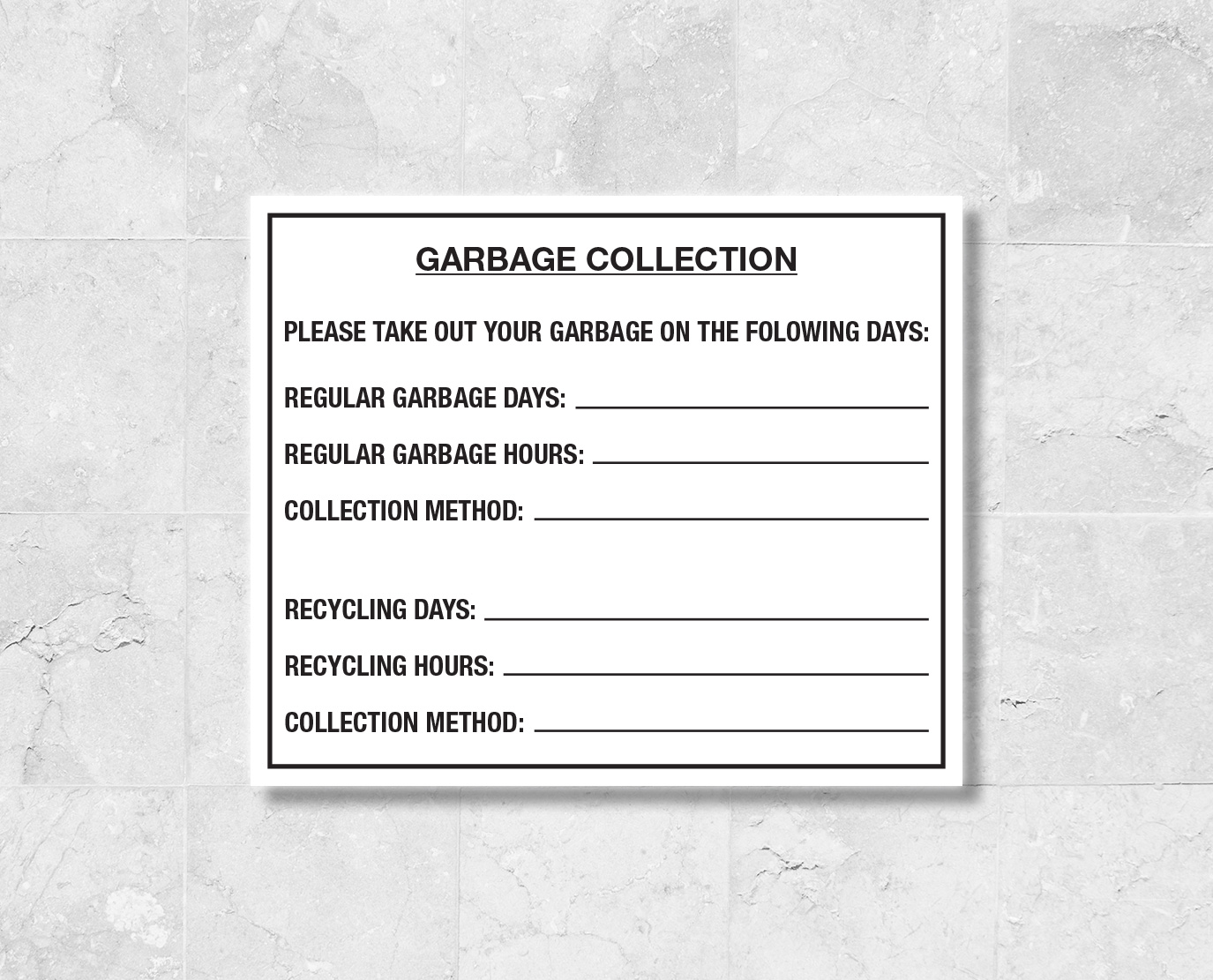
3. Building Floor Numbers
Each floor of a building (Yes, including the basement!) must be identified. This can be accomplished either with a sign or with vinyl numbers and letters placed directly on the wall surface.
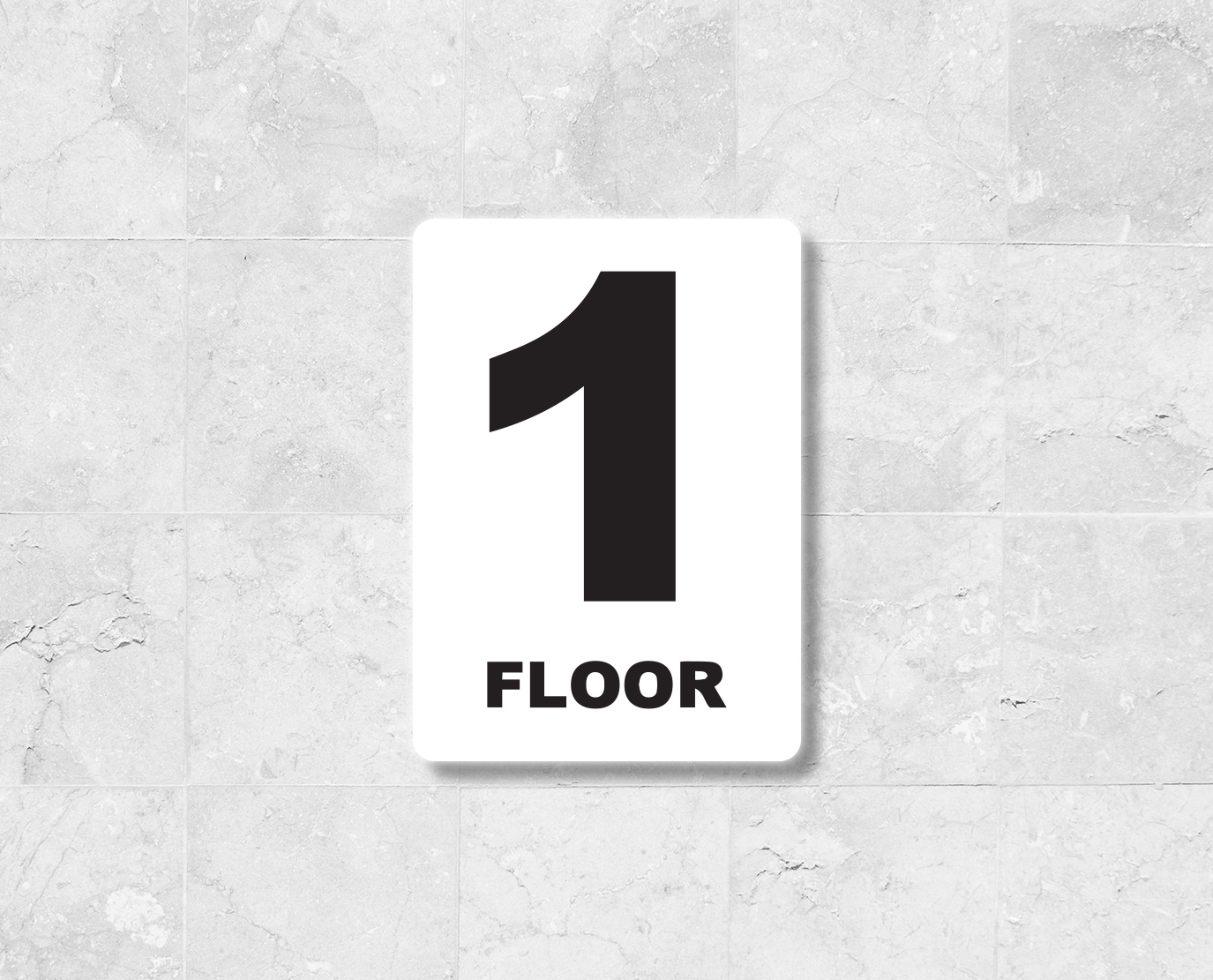
4. Street Address Numbers
At the front entrance of your building, you are required by law to clearly display your property’s street number, aka its address. The rule of thumb for a functioning and properly maintained street number sign is that it must be visible by a person standing on the sidewalk in front of the property.
5. HPD Building Registration Number (aka Serial Number) Sign
When you register with NYC HPD, your building will be issued its own unique serial number. This number must be displayed on a durable, regulation sized sign, along with the building’s street address. It must also contain the name and contact information for the superintendent or janitor. Along with most of your informational HPD signage, this sign must be posted in the building’s front hallway, vestibule or lobby. Remember, your building registration has to be filed every year by September 1!

6. Heating System (aka Boiler Room Keys) Information Sign
According to HPD rules, owners must post the name and location/ contact information of the person in charge of the building’s heating system or boiler room key on not one but two different HPD-compliant notices. One notice should be hung in clear view in the lobby or vestibule, while the other should be posted on the door to the building’s mechanical room.
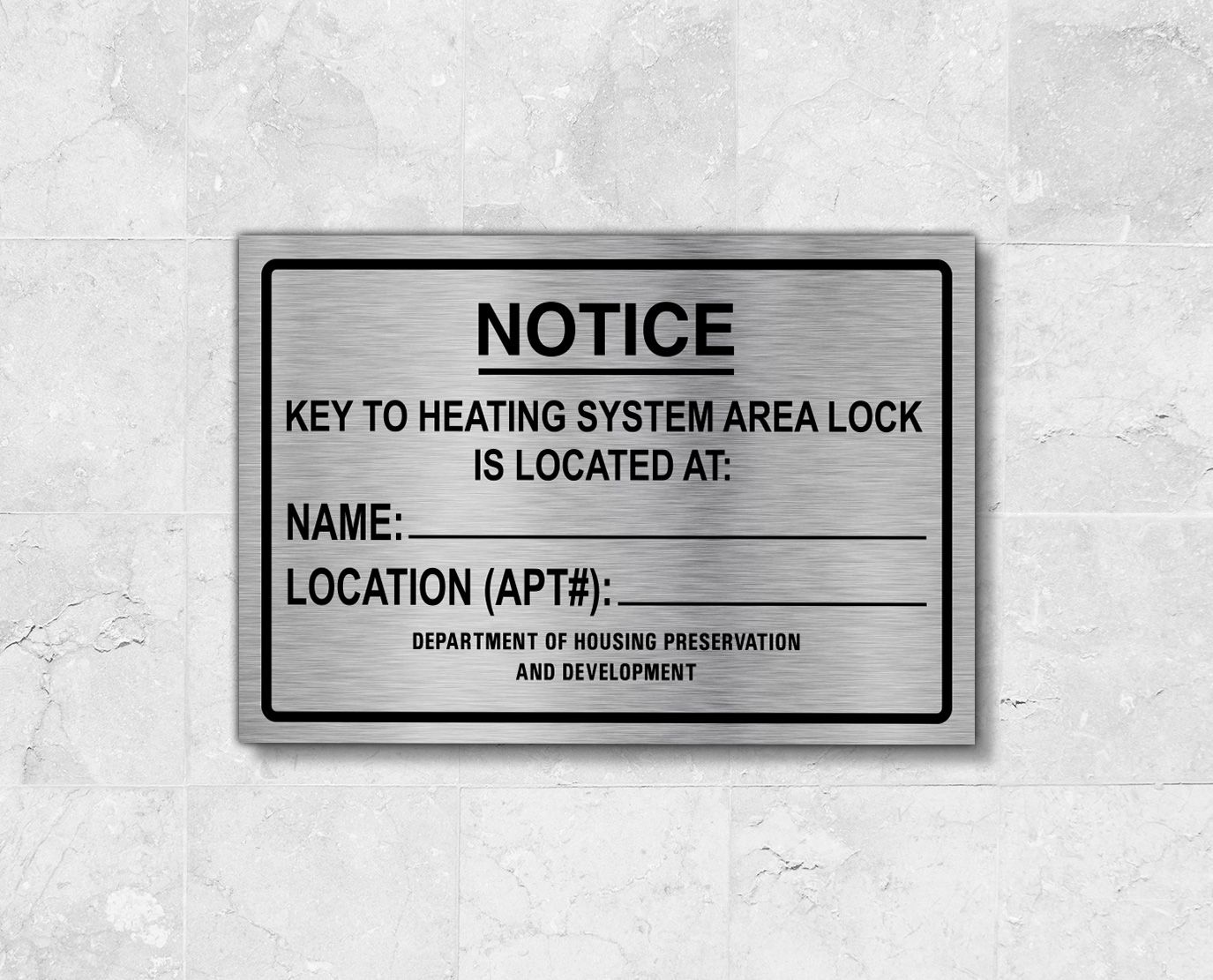
7. Combined Gas, Smoke Detector, Carbon Dioxide Alarm Notice Sign
For years, landlords had to post separate signs for the following three purposes: tenant instructions on what to do in case of a gas leak, information on smoke detectors, and carbon monoxide alarm notices. Thanks to a recent rule change (§12-12.1 of Chapter 12, Title 28) which was passed in October 2017, you can now post a single sign that covers all of these requirements.
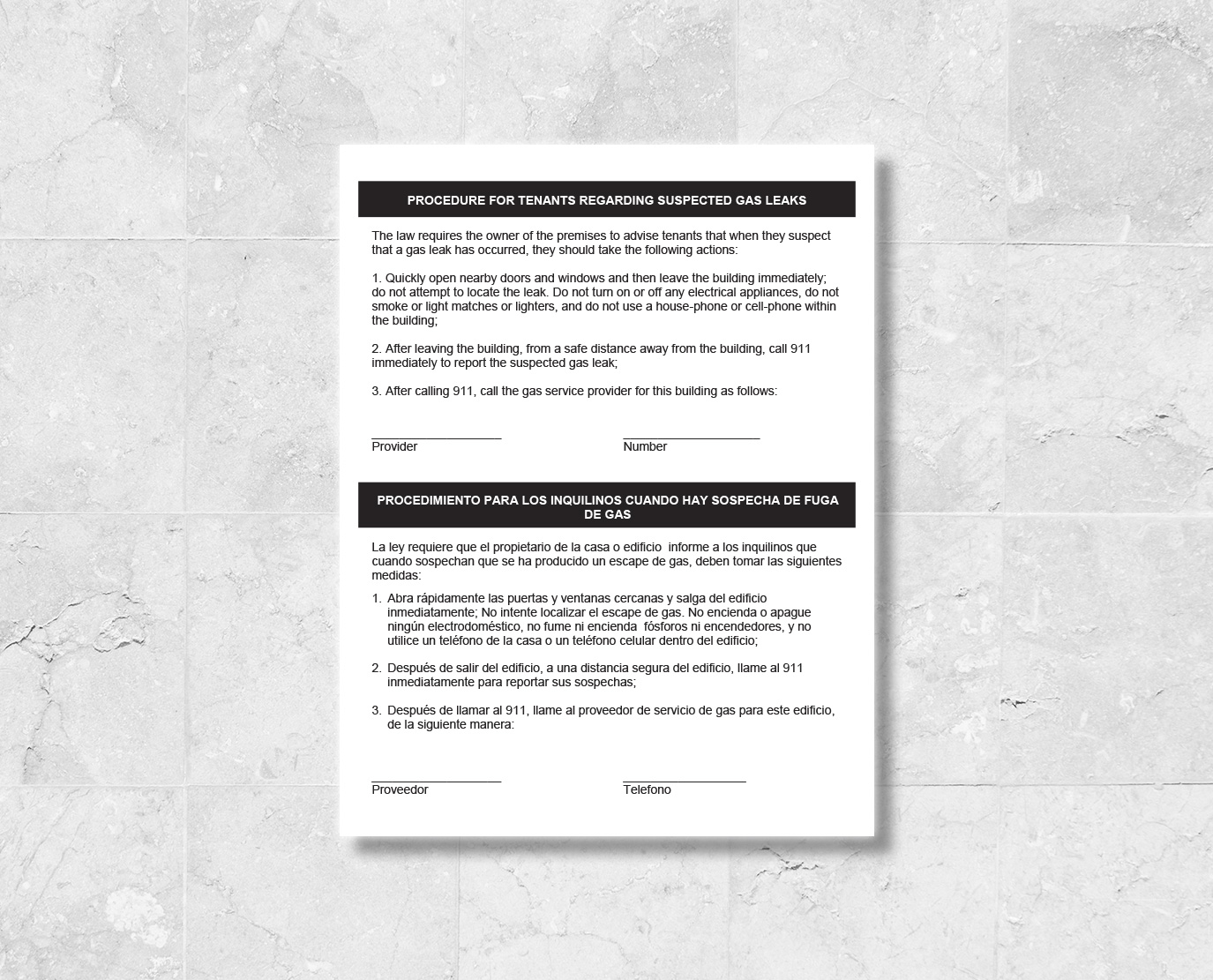
8. Housing Information Guide Notice
You must display a sign indicating to tenants how to access the housing information guide — which is a handbook used by both landlords and renters that lays out local housing regulation and is otherwise known as “the ABCs of Housing” — in a clearly visible spot near the tenant mailboxes.
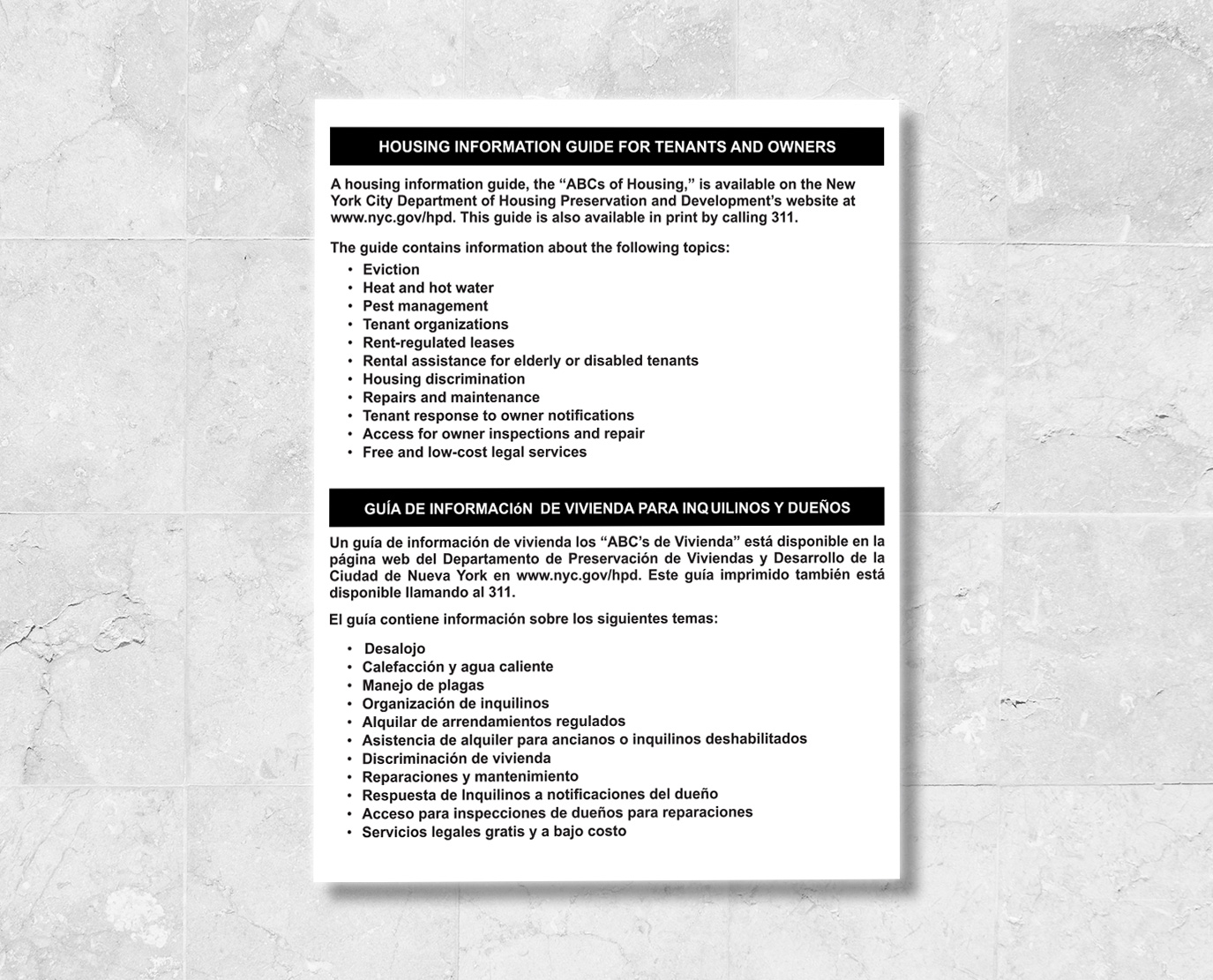
9. Disaster Response (aka Emergency Notification) Sign
Building owners must display a temporary notice prior to major weather emergencies. This includes in the immediate aftermath of natural disasters, as well as power outages that will last longer than one day. The notice must be posted in a timely manner as soon as building management learns that one of these types of events has either already occurred — or is about to happen
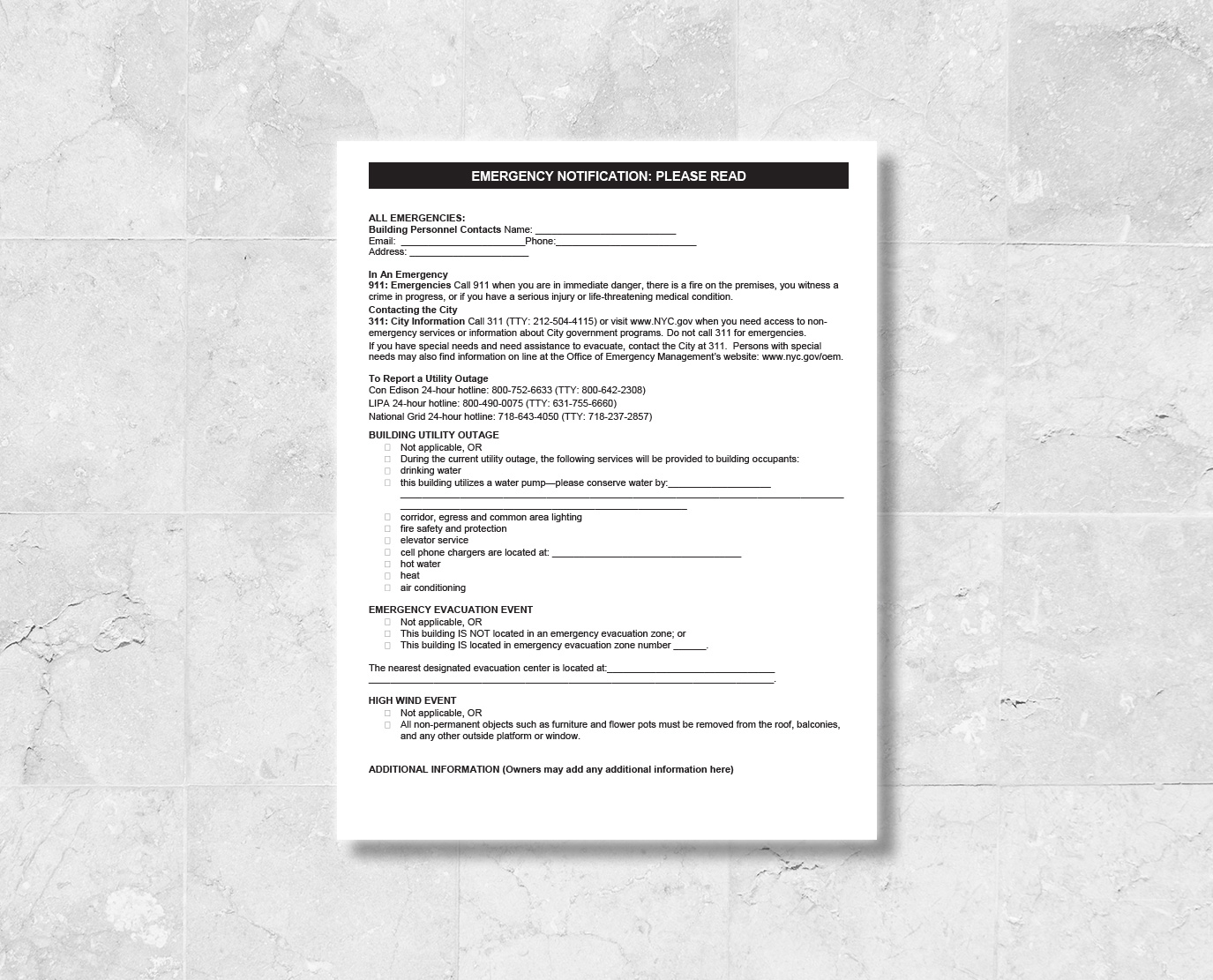
10. Safe Construction Bill of Rights Sign
If you’re planning on having any work done on your building, you’ll need to either post or deliver to each individual resident a notice announcing your permit filing, as well as a tenant protection plan for once construction is underway.
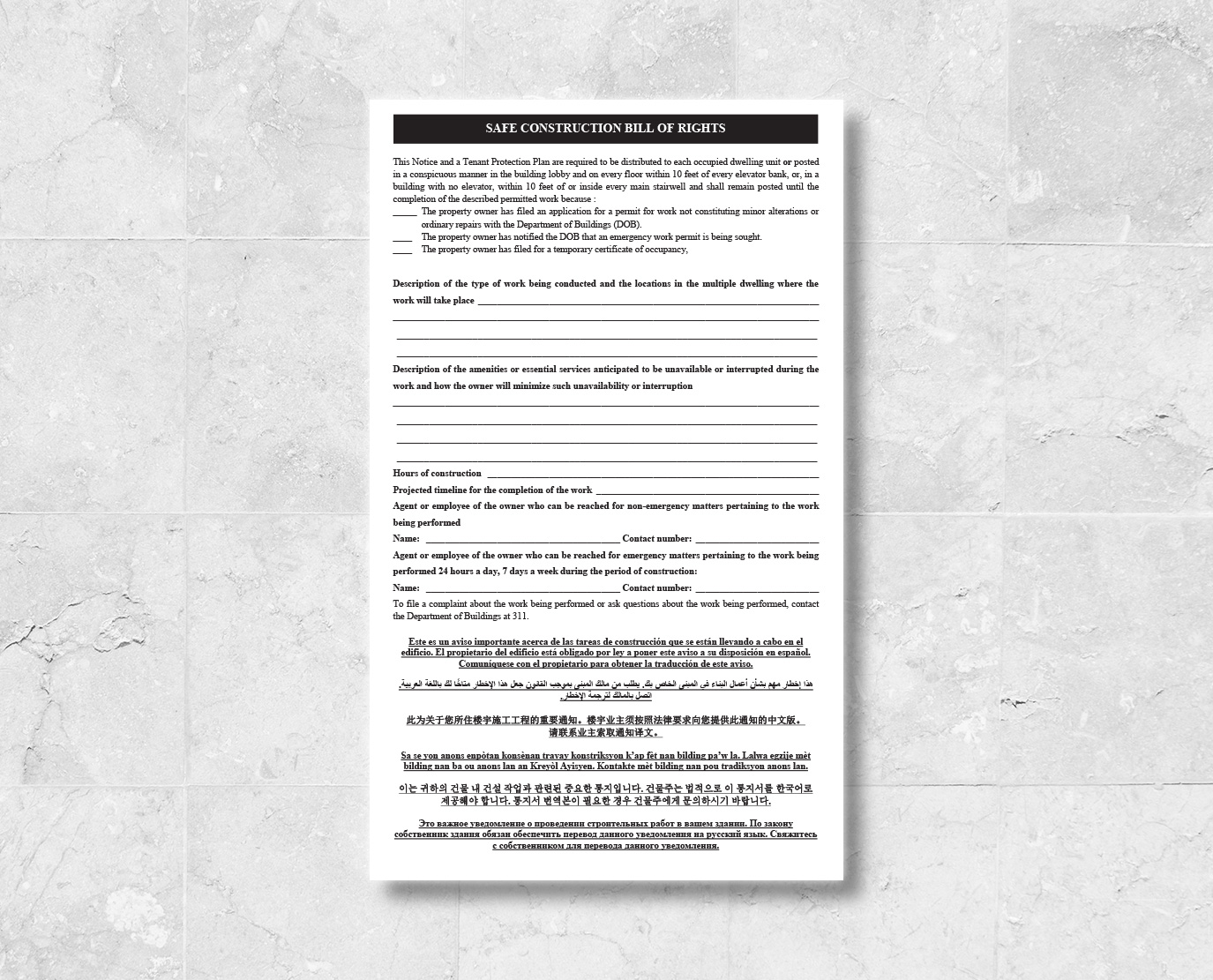
Much like with the Interruption of Services Notice, this sign must be posted in English, as well as any other languages spoken by tenants and recognized by the city of New York as a widely spoken language among New Yorkers — including Spanish, Arabic, Haitian Creole, Chinese, Korean, and Russian.
11. Notice About Tenant Screening Reports
If you conduct background checks on potential tenants, you are required by law to let applicants know if they are being rejected based on a low credit score or any other issue. Anyone who is turned down also has a right to dispute the accuracy of the report being used.

For this reason, you must also disclose the name and location/ contact information for the consumer reporting firm you are using. The sign must also inform applicants that they are eligible for a free annual credit report from each of the three national credit reporting agencies: Equifax, Experian, and TransUnion. As with all of the above mentioned signs, this notice needs to be prominently displayed in a common area of the building, such as near the mailboxes, lobby, front hallway, etc.
HPD Signs as Guides
With great power comes great responsibility. Fortunately, as a new NYC property owner or manager you can view HPD signs as a guide for many of your other landlord responsibilities. These notices and the city resources they cite, such as the ABCs of Housing, are put in place for the education and benefit of building residents as well as management.
For more information on how to obtain required HPD signs from the local leader in compliance signage, please visit our HPD Building Signs page, call (718) 453-8300, or fill out this quick and easy form for a free quote.
